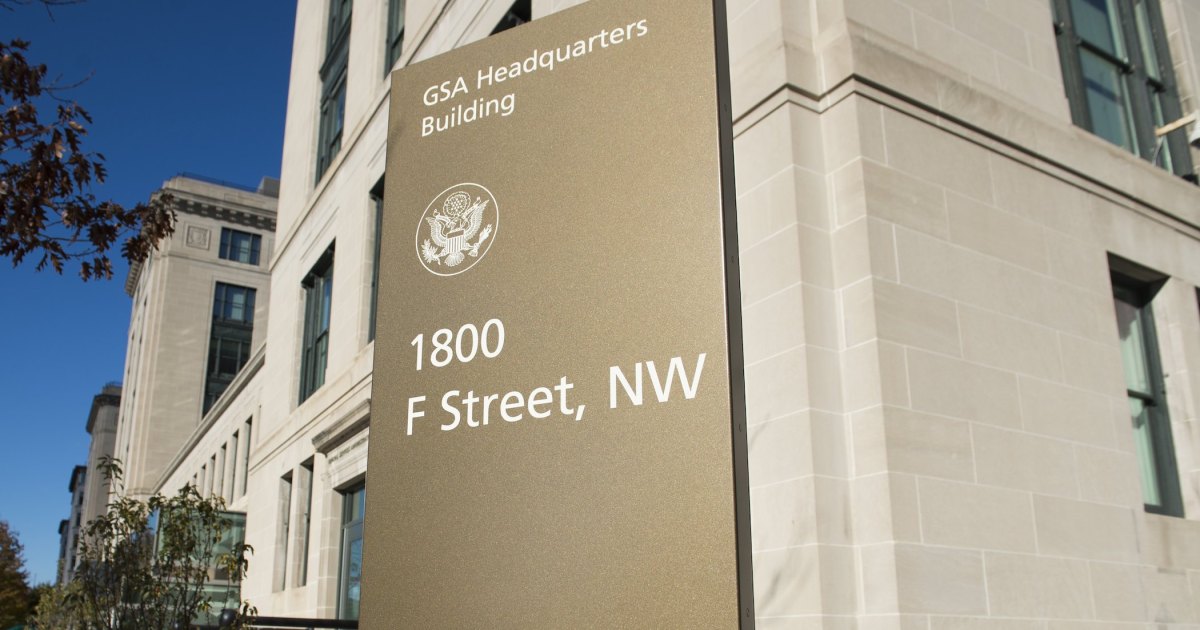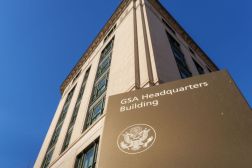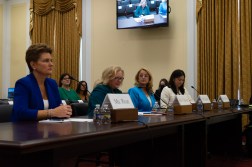GSA eyes wider service impact in response to CX executive order

As the General Services Administration looks to deliver on the action items laid out in the recent customer experience executive order, it’s focused on using its common services to have an impact on as much as the federal government as possible, according to top technology officials at the agency.
The more agencies and people that GSA’s services, programs or projects touch, the better, the officials told FedScoop in an exclusive interview. Those efforts include the delivery of digital services supported by the agency’s Technology Transformation Services branch, as well as its administration of Technology Modernization Fund projects.
There’s “this real focus on shared services” in the executive order, said Dave Zvenyach, director of TTS. “It really mentions this idea of sort of the governmentwide approach. And one of the great things that’s called out in the executive order is building on some of the experience and work that we’ve done over the years around shared services,” he said, pointing to TTS programs like Login.gov, Search.gov and the U.S. Web Design System.
“We’re really thinking about how we can build on top of those strengths,” Zvenyach said.
While federal agencies face different mission sets, they often ultimately come back to serving the same people: the greater U.S. public. And the new executive order stresses that common customer to bring agencies closer in how they serve the public, he said.
“Ultimately, one of the things that we have recognized over the years, and we see this expressed in the executive order, is that it is all too easy for agencies to think about themselves and just sort of say, ‘Well, what does it mean for me?'” Zvenyach said. “As opposed to putting the user or the customer in the center of the work. And the executive order really pushes agencies to think about what the user need actually is and to put that squarely into the center.”
The Technology Modernization Fund, which has its program office housed in GSA, is taking a similar approach in seeking out modernization project proposals that provide the greatest benefit to the American public and across agencies.
By serving as this central clearinghouse of sorts for agencies looking for investments to support modernization, the TMF has the ability to follow trends from across government to “make the most impactful kind of strategic investments in government technology modernization as a whole,” said Raylene Yung, executive director of the TMF.
“We have this pretty unique bird’s eye view of what federal agencies are looking to modernize,” Yung said. “And so we’re kind of in this position to look across and say: ‘Wow, this is a common theme that we’re seeing, or, you know, maybe this investment actually might have a disproportionately large impact because it might benefit multiple agencies, or this is a shared problem that we think one solution in one place can benefit others.'”
At the same time, the TMF has been forced to find a way to do the most good from the investments it’s gotten based on an influx of demand. While the TMF saw a billion-dollar injection in 2021 under the American Rescue Plan Act — far surpassing what it had received in several years’ worth of fiscal appropriations prior to that — the response was staggering, with agencies submitting $2 billion across more than 100 proposals since last spring.
Before, that, “over the course of three years, the TMF maybe looked at a few dozen proposals and made 11 investments,” Yung said.
As an example of focusing on widespread impact, TMF Board last September made three different awards to agencies for zero-trust security projects, which the Biden administration has prioritized through its recent cybersecurity executive order. Rather than those agencies facing those projects independently, the TMF office created a cohort so they could work in lockstep.
“So all three agencies meet every other week. They talk, they exchange tips, they exchange information,” Yung said. “And that idea was TMF is not only giving each agency funding and an opportunity to accelerate their zero-trust journey, but now they can collaborate. And as a group, they can publish shared findings, and all other agencies doing the same things” can take advantage of that.
And Yung hopes to add more technical talent to the TMF team in the coming year “to support projects and investments through their full lifecycle.”
Yung, who joined GSA in September 2021, said these offices across the agency are “really feeding well together” to support cross-government, high-impact services by “thinking about opportunities to create these shared platforms and services and tools that work really well, for maybe all agencies or multiple agencies.”
After spending the past several years founding and leading the U.S. Digital Response — a nonprofit response organization designed to assist governments, mostly at the state and local level, and other organizations during crisis — Yung said this shared perspective also extends beyond the federal level of government: “What are those shared services that GSA can provide, that the federal government can provide that reach throughout all levels of government?”
‘Common vocabulary’
Ultimately, the new CX executive order not only gives agencies marching orders to improve customer services but also offers a blueprint and “common vocabulary” on how to execute, Zvenyach and Yung emphasized.
“There’s a reason beneath [the executive order], which is that we ultimately want policymakers to be able to confidently pass laws and regulations and have them actually get services delivered to folks,” Zvenyach said. “And we also want to make sure that when people interact with the government, it’s an opportunity to build trust and to build better experiences with the government.”
While the implementation of the executive order is a whole-of-government effort, GSA as a central service provider to other agencies is “really thinking about implementing the spirit and the practical day to day work around that customer experience executive order, really trying to focus on reducing burden and thinking about addressing the public’s needs when they’re interacting with government,” he said.
Yung added: “It’s kind of establishing that common language that agencies can use to say: ‘We need to make these websites more accessible, we need to think about the shared user experience, a life experience that touches multiple agencies.’ And so I think already, you can see that vocabulary kind of making it into strategic conversations and to goal setting and planning for appropriations for the next year and the following year.”






